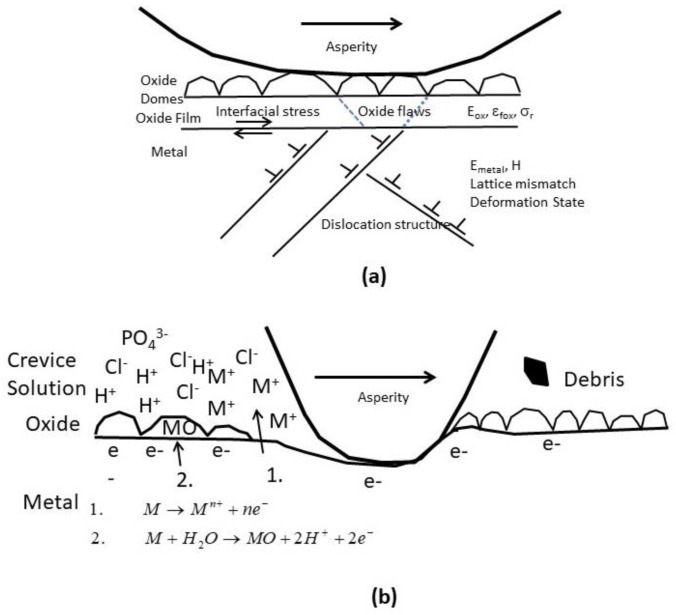Figure 30.
Schematics of asperity-oxide-metal interfaces showing some of the factors associated with fretting corrosion processes [40]. (a) The surface oxide film in contact with an opposing asperity has a structure that typically consists of an oxide dome on an oxide film with its characteristic modulus of elasticity, fracture strain and residual stresses. A lattice mismatch between oxide and metal gives rise to residual stresses and interfacial stresses as does the asperity interaction. The metal substrate structure and chemistry are also important, for example, the dislocation density. (b) An asperity moving across a metal-oxide surface where contact stresses and motion scrape oxide from the metal surface, generating oxide debris. Behind the moving asperity, electrochemical reactions regenerate the oxide and dissolve metal cations into the crevice solution. Hydrogen ion generation and anions migrating into the crevice to maintain charge neutrality cause local pH drop [40]. Reprinted with permission from Springer Nature.

